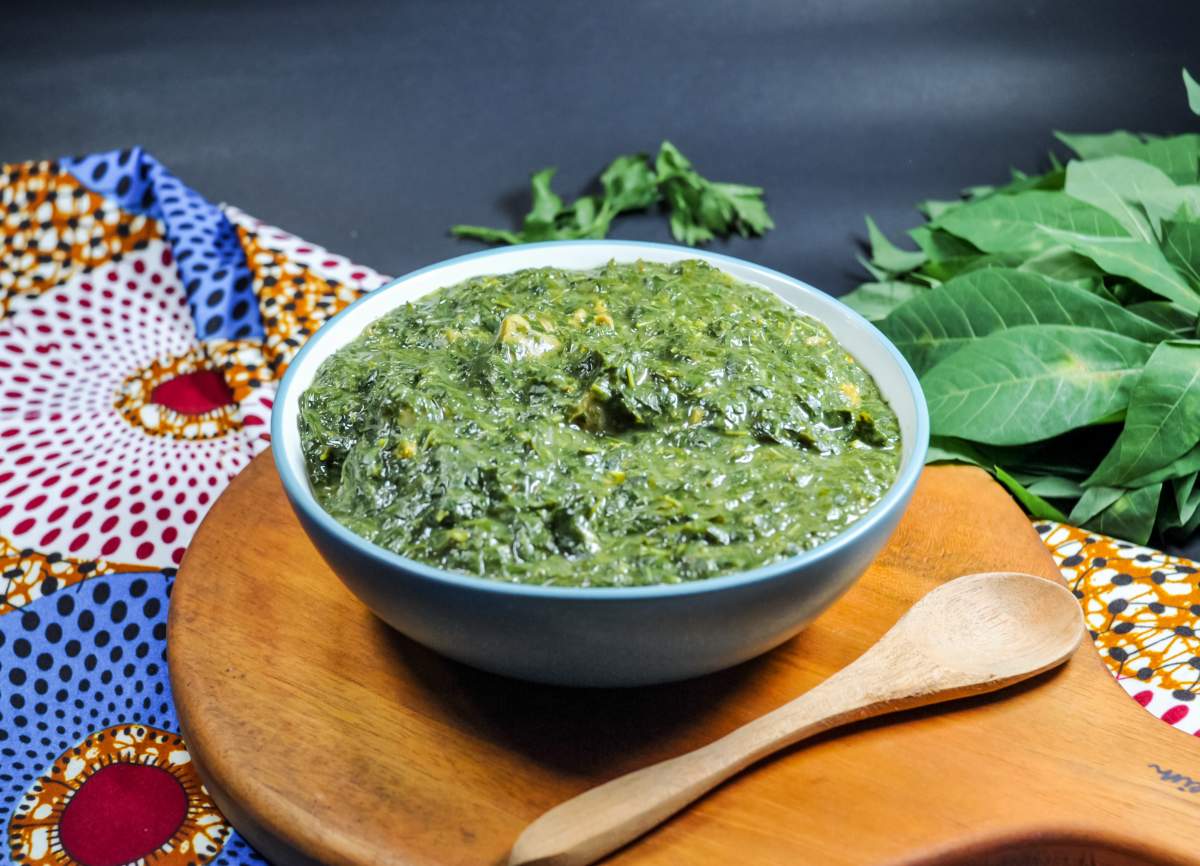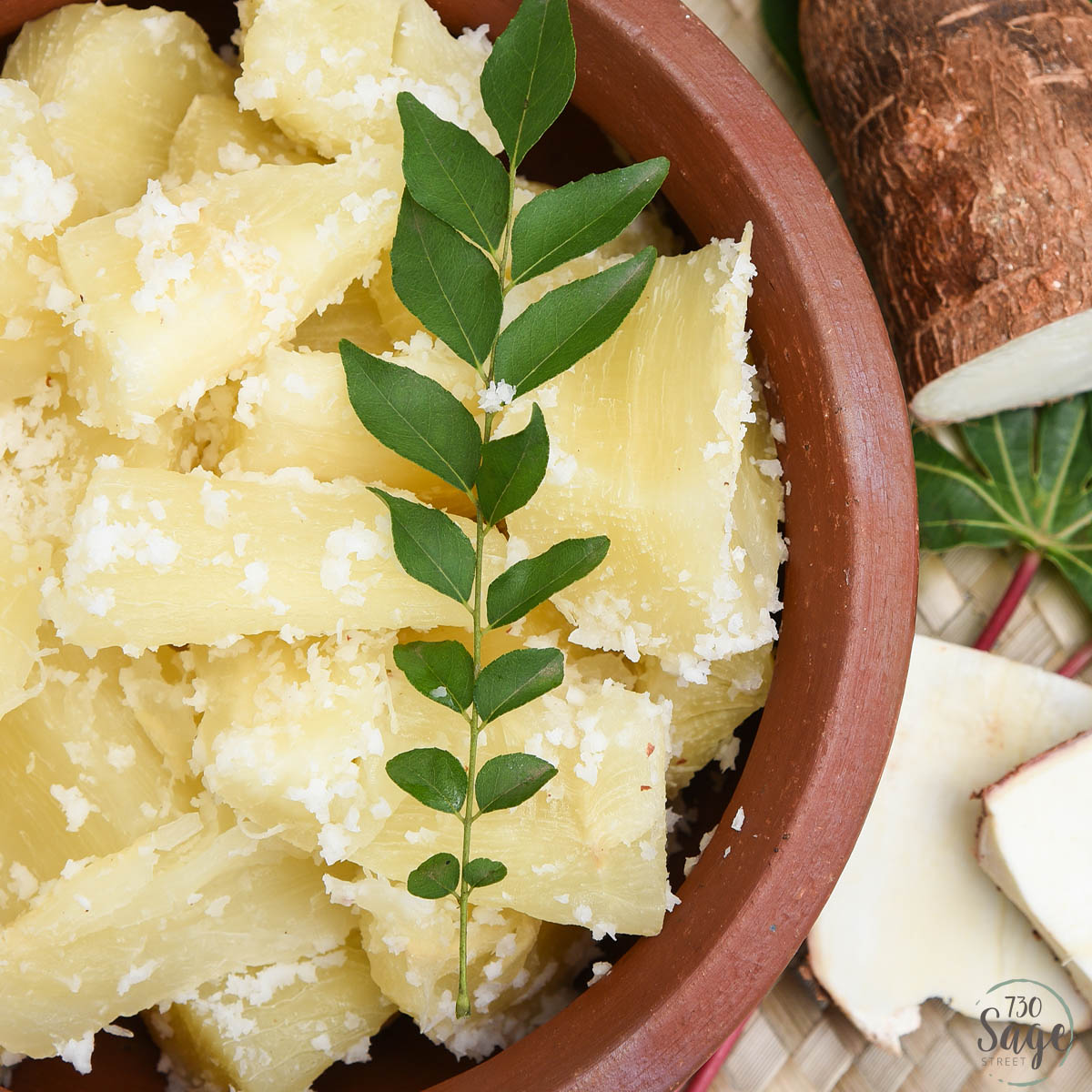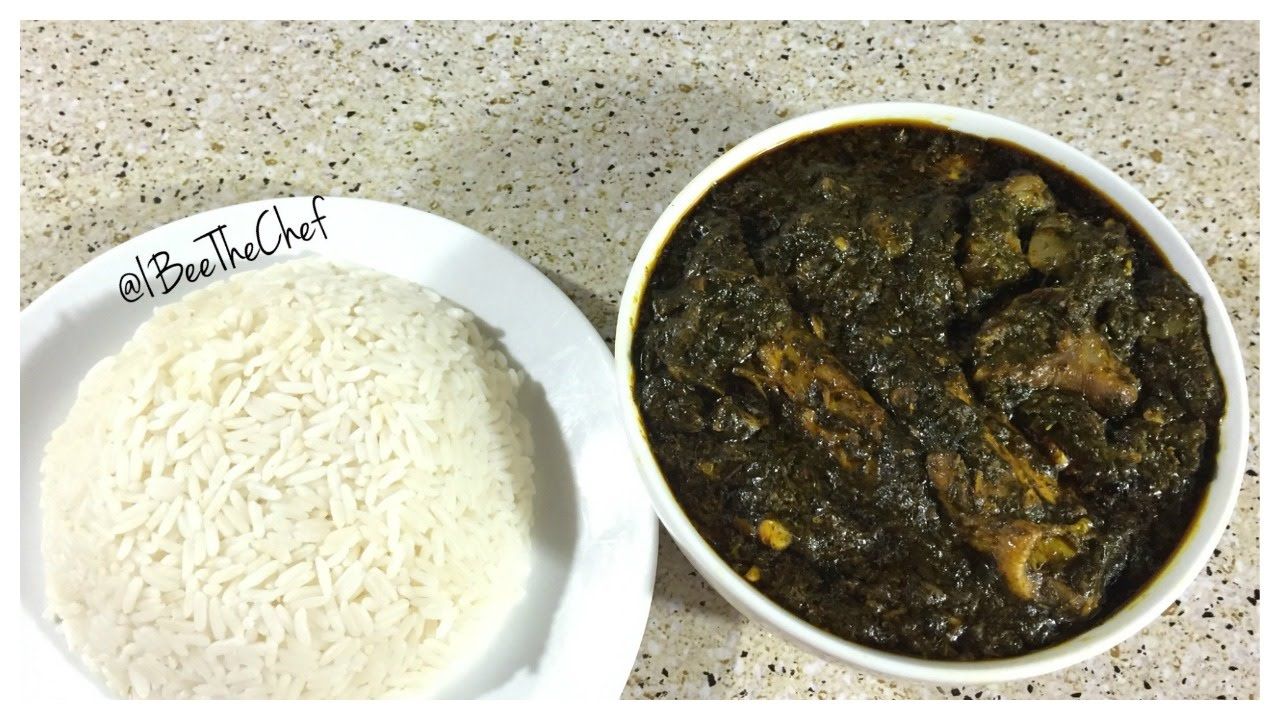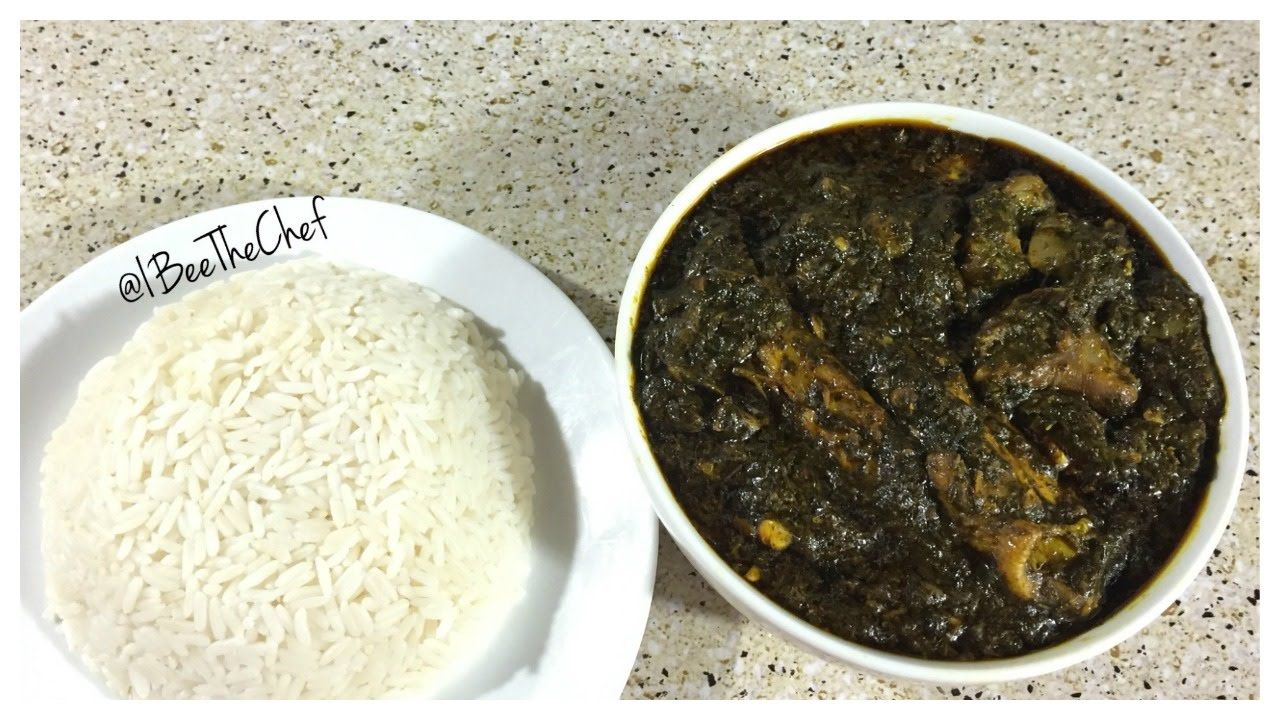How to Cook and Enjoy Cassava Leaf: Essential Recipes and Tips for Delicious Meals – Cassava leaves, often overlooked, are a nutritional powerhouse with a surprisingly versatile flavor profile. From the bustling markets of Africa to the kitchens of Southeast Asia, cassava leaves have been a staple ingredient for centuries, offering a unique culinary experience.
This guide delves into the world of cassava leaf cooking, exploring its nutritional benefits, essential preparation techniques, and mouthwatering recipes. Whether you’re a seasoned chef or a curious home cook, we’ll equip you with the knowledge and inspiration to transform this humble ingredient into a culinary star.
Introduction to Cassava Leaf: How To Cook And Enjoy Cassava Leaf: Essential Recipes And Tips For Delicious Meals
Cassava leaves, also known as “manihot esculenta,” are a versatile and nutritious leafy green vegetable that has been a staple food in many cultures for centuries. While the starchy root of the cassava plant is commonly consumed, the leaves are equally valuable, offering a rich source of essential nutrients and adding a unique flavor to a wide array of dishes.
Nutritional Value of Cassava Leaves
Cassava leaves are a nutritional powerhouse, packed with vitamins, minerals, and antioxidants. They are an excellent source of vitamin A, which is crucial for maintaining healthy vision and skin. They also contain significant amounts of vitamin C, a potent antioxidant that supports immune function and collagen production.
In addition, cassava leaves are rich in iron, a vital mineral for red blood cell production and oxygen transport throughout the body. Cassava leaves also provide a good source of dietary fiber, which aids in digestion and promotes satiety.
Cassava leaves are a versatile ingredient that can be used in a variety of delicious dishes, from soups and stews to stir-fries and salads. If you’re looking for a unique and festive way to decorate your home for fall, why not try making a beautiful autumn leaf garland?
Autumn Leaf Garland DIY: Craft a Gorgeous and Festive Fall Decoration provides a step-by-step guide to creating your own stunning garland, and then you can return to your cassava leaf cooking with inspiration and a touch of autumnal cheer.
They are low in calories and fat, making them a healthy and satisfying addition to a balanced diet.
Versatility of Cassava Leaves in Cooking, How to Cook and Enjoy Cassava Leaf: Essential Recipes and Tips for Delicious Meals
Cassava leaves offer a wide range of culinary possibilities, adapting well to various cooking methods and flavor profiles. They can be boiled, steamed, stir-fried, or used in soups and stews. Their distinct earthy flavor and slightly bitter notes complement a variety of ingredients, from meat and seafood to vegetables and spices.
Common Culinary Uses of Cassava Leaves Across Different Cultures
Cassava leaves are a popular ingredient in many cuisines around the world, particularly in tropical regions where the plant thrives.
- Africa:In West Africa, cassava leaves are commonly used in a dish called ” Egusi Soup,” a rich and flavorful soup often made with melon seeds, vegetables, and meat. In other parts of Africa, cassava leaves are cooked with palm oil, fish, and spices to create a flavorful and nutritious dish.
- Asia:In Southeast Asia, cassava leaves are often used in stir-fries, curries, and soups. They are commonly paired with ingredients like garlic, ginger, chili peppers, and fish sauce to create aromatic and flavorful dishes. In the Philippines, cassava leaves are used in a dish called ” Ginataang Langka,” a creamy coconut milk-based dish that also includes jackfruit.
- Latin America:In Brazil, cassava leaves are a key ingredient in a dish called ” Feijão Tropeiro,” a hearty stew that typically includes beans, bacon, and sausage. In other parts of Latin America, cassava leaves are often used in soups, stews, and salads.
Selecting and Preparing Cassava Leaves

Choosing fresh and properly prepared cassava leaves is crucial for ensuring a delicious and safe meal. Selecting the right leaves and following the proper cleaning and preparation techniques will enhance the flavor and texture of your dishes while eliminating potential toxins.
Selecting Fresh Cassava Leaves
To guarantee the best quality and flavor, select cassava leaves that are vibrant green, tender, and free from any signs of damage or discoloration. Here’s a guide to selecting fresh cassava leaves:
- Color:Fresh cassava leaves should have a deep, vibrant green color. Avoid leaves that are yellowish or brown, as they indicate aging or damage.
- Texture:The leaves should be tender and pliable. Avoid leaves that are brittle or dry, as they may be too old.
- Free from Damage:Inspect the leaves for any signs of damage, such as holes, tears, or discoloration. These can indicate the presence of pests or diseases.
- Freshness:Choose leaves that have a fresh, slightly earthy aroma. Avoid leaves that have a musty or sour smell, which can indicate spoilage.
Cleaning Cassava Leaves
Thorough cleaning is essential to remove dirt, debris, and any potential contaminants. This step ensures a safe and enjoyable meal.
- Rinse:Wash the cassava leaves under running water to remove any loose dirt or debris.
- Soak:Soak the leaves in a bowl of clean water for about 15-20 minutes to loosen any remaining dirt. You can add a pinch of salt to the water to help further remove impurities.
- Scrub:Gently scrub the leaves with your hands or a clean brush to remove any stubborn dirt or insects.
- Rinse Again:Rinse the leaves thoroughly under running water to remove any residual dirt or salt.
Blanching Cassava Leaves
Blanching is a crucial step in preparing cassava leaves for cooking. It helps to remove any toxins, reduce bitterness, and enhance the leaves’ texture.
- Boiling Water:Bring a large pot of water to a rolling boil.
- Blanch:Add the cleaned cassava leaves to the boiling water and blanch for 2-3 minutes. This process will help to remove any toxins and make the leaves more palatable.
- Shock:Immediately transfer the blanched leaves to a bowl of ice water to stop the cooking process and preserve their vibrant green color.
- Drain:Drain the leaves thoroughly and pat them dry with a clean kitchen towel.
Essential Cassava Leaf Recipes
Cassava leaves, a versatile and nutritious ingredient, can be transformed into a variety of delicious and satisfying dishes. This section explores some essential recipes that showcase the diverse culinary possibilities of this leafy green. From classic African stews to flavorful stir-fries, these recipes provide a foundation for exploring the world of cassava leaf cuisine.
Cassava Leaf Recipes
A diverse range of recipes utilizes cassava leaves as a key ingredient, reflecting the culinary traditions of different cultures. These recipes often incorporate local flavors and techniques, resulting in unique and flavorful dishes.
Recipe Name |
Ingredients |
Instructions |
Serving Suggestions |
|---|---|---|---|
Cassava Leaf Soup (Egusi Soup) |
|
|
|
Cassava Leaf Stir-Fry |
|
|
|
Cassava Leaf Salad |
|
|
|
Cassava Leaf and Fish Stew |
|
|
|
Cooking Techniques and Tips

Cassava leaves, a versatile and nutritious ingredient, require specific cooking methods to unlock their unique flavors and textures. Proper cooking techniques are essential for achieving the perfect balance of taste and consistency in your cassava leaf dishes.
Methods for Cooking Cassava Leaves
Several methods can be employed to cook cassava leaves, each contributing to a distinct flavor profile and texture.
- Boiling: This is a simple and traditional method that involves immersing cassava leaves in boiling water for a specific duration. Boiling softens the leaves, making them more tender and easier to digest. It is often used as a preliminary step before further cooking methods.
- Steaming: Steaming is a healthier cooking method that preserves the nutrients and flavor of cassava leaves. It involves placing the leaves in a steamer basket over boiling water, allowing the steam to cook them evenly. Steaming helps retain the bright green color and delicate texture of the leaves.
- Stir-frying: Stir-frying is a quick and flavorful method that involves cooking cassava leaves in a hot pan with oil and other ingredients. It creates a crispy texture and allows the leaves to absorb the flavors of the accompanying spices and sauces.
While cassava leaves are a staple ingredient in many cuisines, they can also be a source of inspiration for your fall décor. For a touch of natural beauty, consider crafting a DIY autumn leaf garland using the vibrant colors of fallen cassava leaves, just like the ones you’d find in a beautiful fall decoration – check out How to Create a Beautiful Fall Decoration: DIY Autumn Leaf Garland Tips for some creative ideas.
This unique touch will add a rustic charm to your home, reminding you of the harvest season while you savor the flavors of your cassava leaf dishes.
- Sautéing: Sautéing is similar to stir-frying but involves cooking the leaves in a pan with less oil over a lower heat. It results in a more tender and less crispy texture. Sautéing is ideal for incorporating cassava leaves into stews, soups, or sauces.
- Deep-frying: Deep-frying is a method that involves submerging cassava leaves in hot oil. It creates a crispy exterior and a soft interior, making it a popular choice for snacks or appetizers. Deep-frying is best suited for smaller cassava leaf pieces.
Tips for Achieving the Perfect Texture and Flavor
To achieve the perfect texture and flavor in your cassava leaf dishes, consider the following tips:
- Blanching: Before cooking, blanching cassava leaves in boiling water for a few minutes can help remove any bitterness and soften the leaves. This step is particularly beneficial when using young cassava leaves.
- Adding Acidity: Adding a touch of acidity, such as lemon juice or vinegar, to the cooking liquid can enhance the flavor and prevent the leaves from turning brown.
- Flavor Combinations: Cassava leaves pair well with a variety of flavors. Consider incorporating garlic, ginger, onions, tomatoes, chili peppers, and spices to create a diverse range of dishes.
- Cooking Time: Overcooking cassava leaves can result in a mushy texture. It is essential to cook them until tender but not overcooked.
- Seasoning: Experiment with different seasonings to enhance the flavor of your cassava leaf dishes. Popular choices include salt, pepper, cumin, turmeric, and paprika.
Incorporating Cassava Leaves into Culinary Creations
Cassava leaves are a versatile ingredient that can be incorporated into a wide range of culinary creations. Here are some ideas:
- Soups and Stews: Cassava leaves add a unique flavor and texture to soups and stews. They can be added towards the end of the cooking process to retain their bright green color and delicate texture.
- Salads: Chopped cassava leaves can be used in salads to add a refreshing and slightly bitter note. They pair well with other leafy greens, vegetables, and fruits.
- Wraps and Rolls: Cassava leaves can be used as a wrap for fillings like rice, beans, or vegetables. They provide a unique and flavorful alternative to traditional tortillas or rice paper.
- Side Dishes: Cassava leaves can be cooked as a side dish, similar to spinach or kale. They can be sautéed with garlic, ginger, and spices for a simple and flavorful accompaniment to main courses.
- Snacks: Cassava leaves can be deep-fried or baked into crispy snacks. They can be seasoned with various spices and herbs for a flavorful and healthy treat.
Serving and Enjoying Cassava Leaf Dishes
Cassava leaf dishes are versatile and can be enjoyed in various ways. Whether you prefer a simple home-cooked meal or a more elaborate presentation, there are numerous options to enhance your dining experience.
Visually Appealing Serving Ideas
Presenting cassava leaf dishes attractively can elevate the dining experience. Here are some visually appealing serving ideas:
Dish |
Serving Idea |
Description |
|---|---|---|
Cassava Leaf Soup |
Serve in a rustic bowl with a dollop of sour cream or yogurt on top, garnished with fresh herbs. |
The contrasting colors and textures create a visually appealing presentation. |
Cassava Leaf Stew |
Serve in individual earthenware pots with a side of fluffy rice or couscous. |
The earthy tones of the pots complement the rich colors of the stew. |
Cassava Leaf Salad |
Arrange the salad on a bed of mixed greens, topped with toasted nuts and a drizzle of a tangy vinaigrette. |
The contrasting textures and colors create a visually appealing and refreshing salad. |
Pairing Cassava Leaf Dishes with Complementary Side Dishes and Beverages
Cassava leaf dishes pair well with a variety of side dishes and beverages. Consider these options:
- Side Dishes:
- Starchy:Rice, couscous, quinoa, fufu, plantains, or yams.
- Vegetable:Steamed vegetables, salads, or coleslaw.
- Beverages:
- Fruit Juices:Mango, pineapple, or passion fruit juice complement the earthy flavors of cassava leaf dishes.
- Non-Alcoholic Beverages:Iced tea, lemonade, or sparkling water.
- Alcoholic Beverages:A light beer or a dry white wine can pair well with certain cassava leaf dishes.
Cultural Traditions and Customs Related to Enjoying Cassava Leaf Meals
Cassava leaf dishes are often enjoyed in traditional settings, where they are associated with specific cultural practices and customs.
“In some cultures, cassava leaf dishes are considered a symbol of hospitality and are often served during special occasions or gatherings.”
These traditions often involve specific ways of preparing, serving, and sharing the meals.
- In some regions, cassava leaf dishes are prepared with specific herbs and spices that are unique to the local culture.
- The way the dish is served can also be culturally significant. For example, in some cultures, cassava leaf dishes are served on large platters, allowing everyone to share and enjoy the meal together.
- Eating cassava leaf dishes can be a communal experience, where families and friends gather to enjoy the meal and share stories and laughter.
Health Benefits of Cassava Leaf Consumption

Cassava leaves, often overlooked as a culinary staple, are a nutritional powerhouse packed with essential vitamins, minerals, and antioxidants. Regularly incorporating cassava leaves into your diet can contribute to overall well-being and potentially reduce the risk of various health conditions.
Nutritional Value and Health Benefits
Cassava leaves are an excellent source of various nutrients, including:
- Vitamin A: Essential for vision, immune function, and cell growth.
- Vitamin C: A potent antioxidant that boosts immunity and protects against cell damage.
- Iron: Vital for red blood cell production and oxygen transport throughout the body.
- Calcium: Crucial for strong bones, teeth, and muscle function.
- Protein: A building block for tissues, enzymes, and hormones.
- Fiber: Promotes digestive health and helps regulate blood sugar levels.
Regular consumption of cassava leaves may contribute to:
- Improved Immune Function: The high vitamin C content boosts the immune system, helping the body fight off infections and illnesses.
- Enhanced Vision: Vitamin A plays a crucial role in maintaining healthy vision, reducing the risk of night blindness and other eye problems.
- Stronger Bones and Teeth: The calcium in cassava leaves supports bone health, reducing the risk of osteoporosis and promoting strong teeth.
- Improved Blood Sugar Control: The fiber content helps regulate blood sugar levels, making cassava leaves a beneficial food for individuals with diabetes.
- Reduced Risk of Anemia: The iron content aids in red blood cell production, preventing iron deficiency anemia.
Potential Nutritional Deficiencies and Risks
While cassava leaves offer numerous health benefits, excessive consumption or improper preparation can lead to certain nutritional deficiencies and risks:
- Cyanide Poisoning: Cassava leaves contain cyanogenic glycosides, which release cyanide upon ingestion. Improper preparation, such as inadequate boiling or drying, can lead to cyanide poisoning, causing symptoms like nausea, vomiting, dizziness, and even death.
- Thiamin Deficiency: Cassava leaves contain thiaminase, an enzyme that breaks down thiamin (vitamin B1). Consuming large quantities of cassava leaves without adequate thiamin intake can lead to thiamin deficiency, causing beriberi, a condition characterized by fatigue, muscle weakness, and neurological problems.
- Goitrogens: Cassava leaves contain goitrogens, compounds that interfere with thyroid hormone production. Excessive consumption can lead to goiter, an enlargement of the thyroid gland.
Incorporating Cassava Leaves into a Balanced Diet
To reap the benefits of cassava leaves while minimizing potential risks, follow these guidelines:
- Proper Preparation: Thoroughly boil or dry cassava leaves before consumption to eliminate cyanogenic glycosides. This process reduces the risk of cyanide poisoning.
- Moderation: Avoid excessive consumption of cassava leaves, as it can lead to nutritional deficiencies and potential health risks.
- Dietary Diversity: Include a variety of foods in your diet to ensure adequate intake of essential nutrients and prevent deficiencies.
- Consult a Healthcare Professional: If you have any concerns about consuming cassava leaves, consult a healthcare professional for personalized advice.
Closure
With a little guidance and a dash of creativity, you can easily incorporate cassava leaves into your culinary repertoire. Beyond its nutritional value, cassava leaves offer a unique flavor and texture that can add a touch of intrigue to any dish.
So, venture beyond the ordinary and discover the delicious world of cassava leaf cooking. Get ready to enjoy the vibrant flavors and health benefits this versatile ingredient has to offer.
FAQs
Are cassava leaves safe to eat?
Yes, cassava leaves are safe to eat when properly prepared. It’s important to blanch them before cooking to remove any toxins.
What does cassava leaf taste like?
Cassava leaves have a slightly bitter, earthy flavor that can be enhanced with spices and other ingredients.
Can I use frozen cassava leaves?
Yes, frozen cassava leaves can be used, but they may require longer cooking time.
